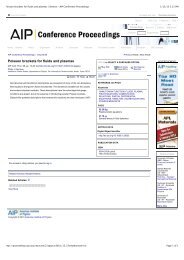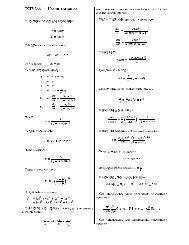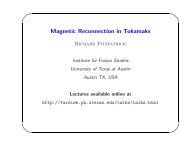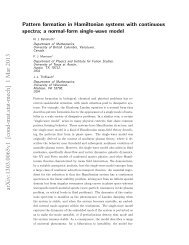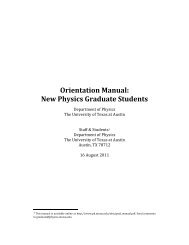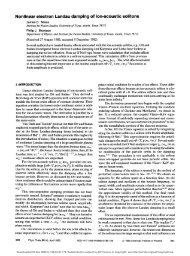Magnetic Fields and Magnetic Diagnostics for Tokamak Plasmas
Magnetic Fields and Magnetic Diagnostics for Tokamak Plasmas
Magnetic Fields and Magnetic Diagnostics for Tokamak Plasmas
You also want an ePaper? Increase the reach of your titles
YUMPU automatically turns print PDFs into web optimized ePapers that Google loves.
<strong>Magnetic</strong> fields <strong>and</strong> tokamak plasmas<br />
Alan Wootton<br />
resonant, so that we cannot immediately calculate the magnetic isl<strong>and</strong> width using Equation 17.1.<br />
Other problems to cope with include how to determine the poloidal (m) mode number from a set<br />
of coils measuring b θ if they are not on a circular contour, so that a simple Fourier analysis is not<br />
possible, <strong>and</strong> toroidal effects.<br />
If the field perturbation is b, then outside the circular plasma at some radius r > a p we have<br />
∇ •b = ∂b r<br />
∂r + im r b θ<br />
+ in R b φ<br />
= 0 17.2<br />
( ∇ × b)• e r<br />
= im r b − in φ<br />
R b 17.3<br />
θ<br />
Form the second equation we have<br />
b θ<br />
b φ<br />
= mR<br />
nr<br />
17.4<br />
which <strong>for</strong> low m, n is >>1, i.e. b θ >> b φ . There<strong>for</strong>e with Equation 17.2 we determine that the<br />
most important contributions to measure are b r <strong>and</strong> b θ , not b φ . If we are measuring just inside a<br />
conducting wall (e.g. the vessel) then b r ≈ 0, so that only b θ should be monitored (but note the<br />
conducting wall also affects the value of b θ : it can also affect the instability which produces b θ<br />
itself).<br />
plasma<br />
θ<br />
• coil at r<br />
• filament at r = a<br />
,θ = θ 0<br />
θ<br />
η<br />
r<br />
ξ<br />
Figure 17.1a Figure 17.1b<br />
A common representation of the fluctuations is as current filaments aligned along the field lines.<br />
Initially let us consider the fields produced in a straight cylinder by a current filament (current I)<br />
aligned along the cylinder, located at poloidal angle θ = θ 0 , at r = a (see Figure 17.1). Then.<br />
b θ<br />
= µ 0<br />
I<br />
2π<br />
( r − a cos( θ − θ 0<br />
)<br />
a 2 + r 2 − 2ar cos θ − θ 0<br />
( ( )<br />
17.5<br />
119



